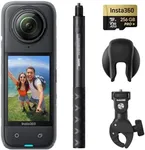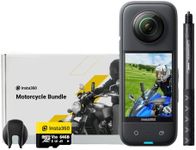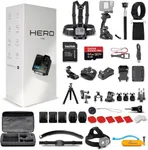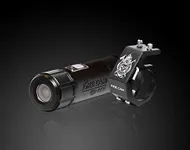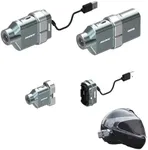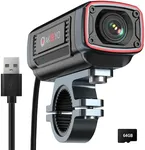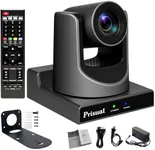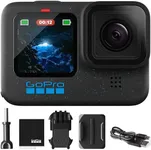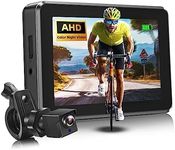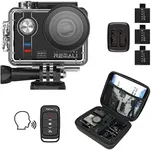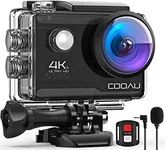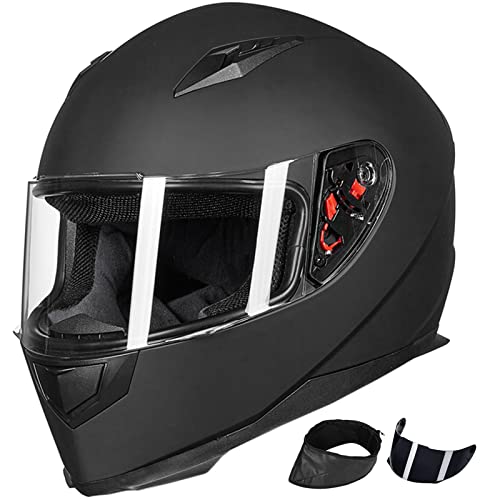Buying Guide for the Best Motorcycle Helmet Cameras
Choosing the right motorcycle helmet camera can greatly enhance your riding experience by allowing you to capture your journeys, improve safety, and even provide evidence in case of an accident. When selecting a helmet camera, it's important to consider several key specifications to ensure you get the best fit for your needs. Here are the main factors to consider and how to navigate them.Video QualityVideo quality determines how clear and detailed your footage will be. This is important for capturing fine details, such as license plates or road signs, and for creating high-quality videos. Video quality is typically measured in resolution, with common options being 720p, 1080p, and 4K. 720p is suitable for basic recording, 1080p offers a good balance of quality and file size, and 4K provides the highest detail but requires more storage space. Choose based on your need for detail and your storage capacity.
Frame RateFrame rate, measured in frames per second (fps), affects how smooth your video appears. A higher frame rate results in smoother motion, which is particularly important for fast-paced activities like motorcycling. Common frame rates are 30fps, 60fps, and 120fps. 30fps is adequate for general use, 60fps offers smoother playback and is better for action shots, and 120fps is ideal for slow-motion footage. Consider how you plan to use your footage when selecting the frame rate.
Field of View (FOV)Field of view refers to the width of the area the camera can capture. A wider FOV can capture more of the surroundings, which is useful for scenic rides and ensuring you don't miss any action. FOV is usually measured in degrees, with common options being 90°, 120°, and 170°. A 90° FOV provides a narrower, more focused view, 120° offers a good balance, and 170° gives a wide-angle view. Choose based on how much of the environment you want to capture.
Battery LifeBattery life determines how long the camera can record before needing a recharge. This is crucial for long rides where you may not have the opportunity to recharge frequently. Battery life can range from 1 to 5 hours or more. Shorter battery life is suitable for short trips or if you can recharge frequently, while longer battery life is better for extended rides. Consider your typical ride duration and availability of charging options when choosing.
Mounting OptionsMounting options refer to how and where you can attach the camera to your helmet. This is important for ensuring the camera is securely attached and positioned correctly. Common mounting options include adhesive mounts, strap mounts, and clip mounts. Adhesive mounts offer a permanent and secure attachment, strap mounts provide flexibility and easy removal, and clip mounts allow for quick attachment and detachment. Choose based on your preference for permanence and ease of use.
Durability and Weather ResistanceDurability and weather resistance determine how well the camera can withstand the elements and rough conditions. This is important for ensuring the camera lasts and performs well in various weather conditions. Look for cameras with waterproof, dustproof, and shockproof ratings. Waterproof cameras are essential for riding in the rain, dustproof cameras are good for off-road conditions, and shockproof cameras can handle bumps and drops. Choose based on the typical conditions you ride in.
Storage CapacityStorage capacity refers to how much footage the camera can hold. This is important for ensuring you don't run out of space during a ride. Storage is typically provided by microSD cards, with capacities ranging from 16GB to 256GB or more. Smaller capacities are suitable for short rides or if you frequently transfer footage, while larger capacities are better for long rides or if you prefer to store more footage before transferring. Consider your recording habits and how often you transfer footage when choosing.
ConnectivityConnectivity options determine how you can transfer footage and control the camera. This is important for ease of use and accessing your footage. Common connectivity options include Wi-Fi, Bluetooth, and USB. Wi-Fi allows for wireless transfer and remote control via a smartphone app, Bluetooth offers easy pairing with other devices, and USB provides a reliable wired connection. Choose based on your preference for wireless convenience or wired reliability.
